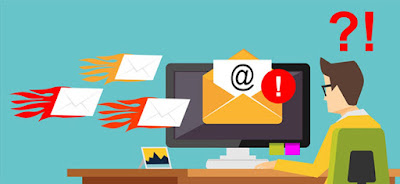WHAT IS EMAIL BOMBARDMENT?


Since the computer began to be popular and to be used in almost any field and for any task, viruses have accompanied its growth and expansion. And while in those early moments it was more of a question of rebelling against the system, the scenario has changed today, with virus development being a most profitable activity.
One of the most dangerous types of virus, but which
nevertheless goes largely unnoticed by all users who carry out their activities
within the scope for which it was created, is the so-called macro virus, a
malware that has been designed to run on those small programs called macros, so
common in office suites such as Office, present in public offices, companies
and personal computers around the world.
If you want to learn more about the dangers of macro
viruses, do not hesitate to carefully read all the content of this post, where
you will find everything you need to avoid having problems with this type of
virus so common in offices.
What
are macro viruses and how to stay safe?
Before starting it is necessary to remember that macros are
small programs that include instructions and commands that are used to infect
popular apps, such as office suites such as Microsoft Office, most commonly in
Word or Excel, to automate or make easier a tasks that would otherwise be much
more complex to perform.
These macros are used by virus developers to include code
that, when executed, opens a door to the attacker that is used to steal
information or infection through expansion to other files on the system for various purposes, always illegal, such as
it could not be otherwise.
One of the simplest ways to get infected with a virus
through a macro is to receive a document, which can be an Excel or Word or any
other that uses macros as part of its work, that contains an infected macro, a
very common situation today in day. By opening it and executing the macro,
which can be disguised as anything else, apparently harmless, we are unleashing
a series of events that can even end in the hijacking of our computer.
This is due to the fact that hidden among the harmless
instructions contained in the macro, there is also code that will allow the
cybercriminal to download malware or viruses to our PC, and already in this
instance, attack us or attack our contact list, for example.
How to
stay safe from macro viruses
The first slogan that we must remember to stay safe from
malware is to use common sense. If we receive an email informing us that we already
have a package available, but we are not expecting one, it is obvious that it
is a trap, and therefore we should not open it.
In the case of macros, if we open a file, and we are shown
the notification to activate the macros, the first thing we have to think about
is whether it is necessary for the document to contain macros. In the case
where the document only contains text and some images then there is no need for
macros hence it is a hoax.
It can also happen that we receive an email from a trusted
contact, and that it is infected with malware. Being from a known contact, we
will most likely open it without thinking twice, but this can be a fatal
mistake.
The point is that our contact may already be infected and
we may be the victims that were available in their contact list. This means
that we should not open any attachment without first checking that it is
clean. Fortunately, realizing this is
easy, since a document infected with a virus macro can be recognized since they
generally do not have a message in the body of the email.
If this is the case, it is best to check with our contact to verify that it was who sent us the message. If you haven't had any input on the subject, then the only smart option is to delete the email with its content.
Delete
macro virus
Unfortunately, if we are users who do not take security
very seriously, becoming infected with some type of macro virus is very simple,
have the antivirus
that can fight with macro viruses and keep your device away from macro viruses.
The only thing they can do is help us clean up in case the macro virus
downloads other threats or sends or receives data to or from our computer.
That is why we must always make a backup copy of our most
important data, since in the event of a macro virus infection that we cannot
control, we can always format the computer so that everything returns to
normal.
Comments
Post a Comment